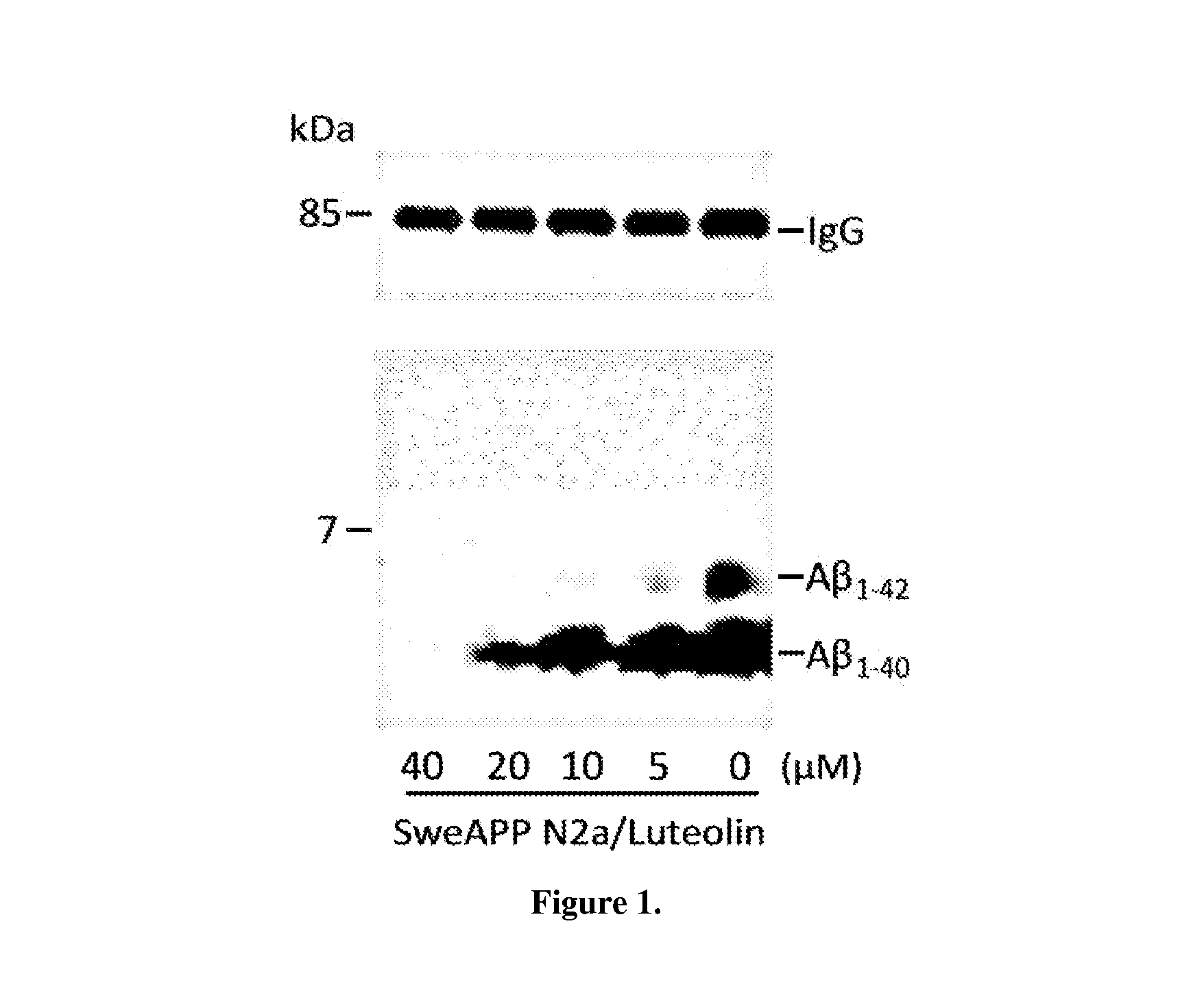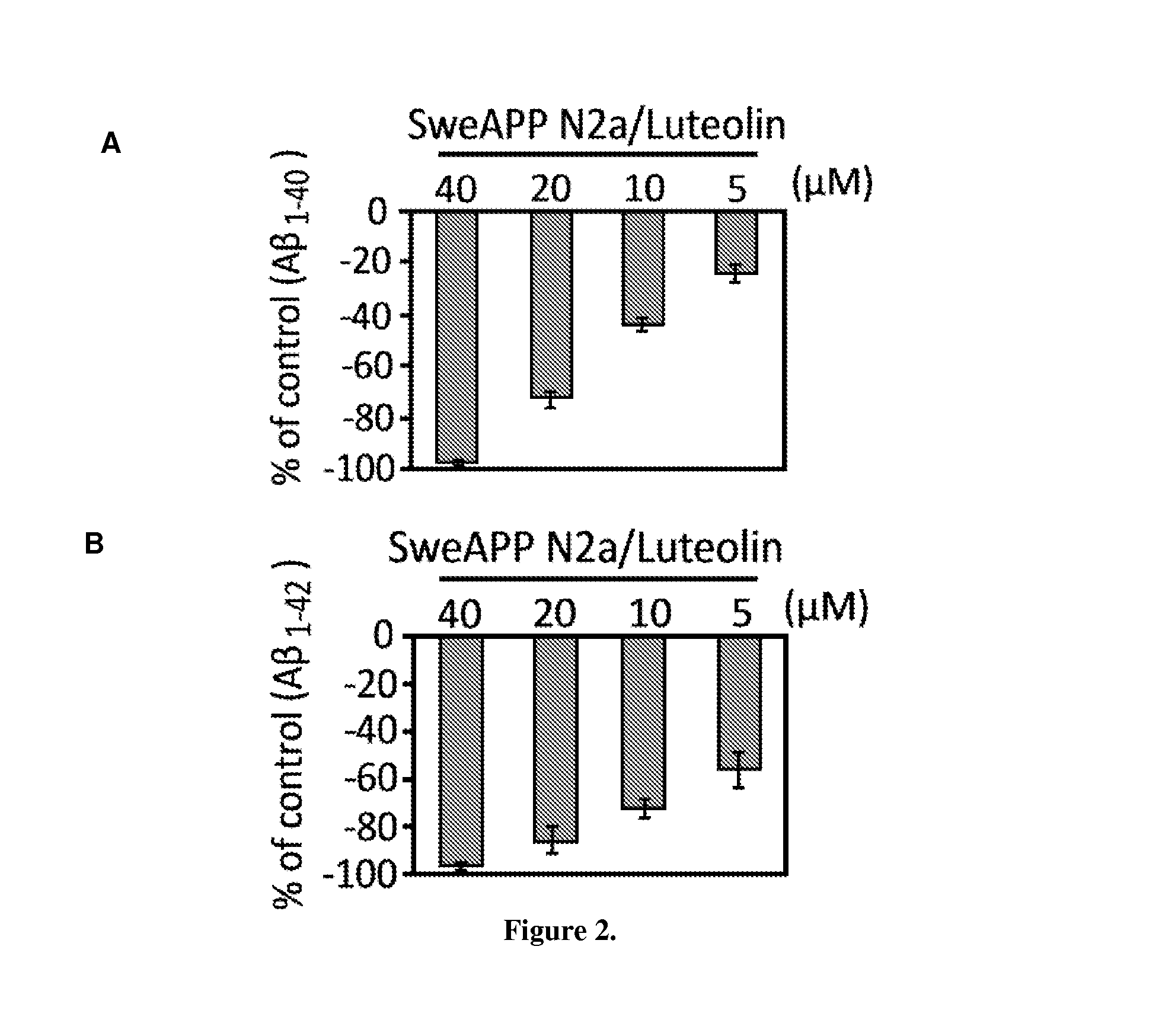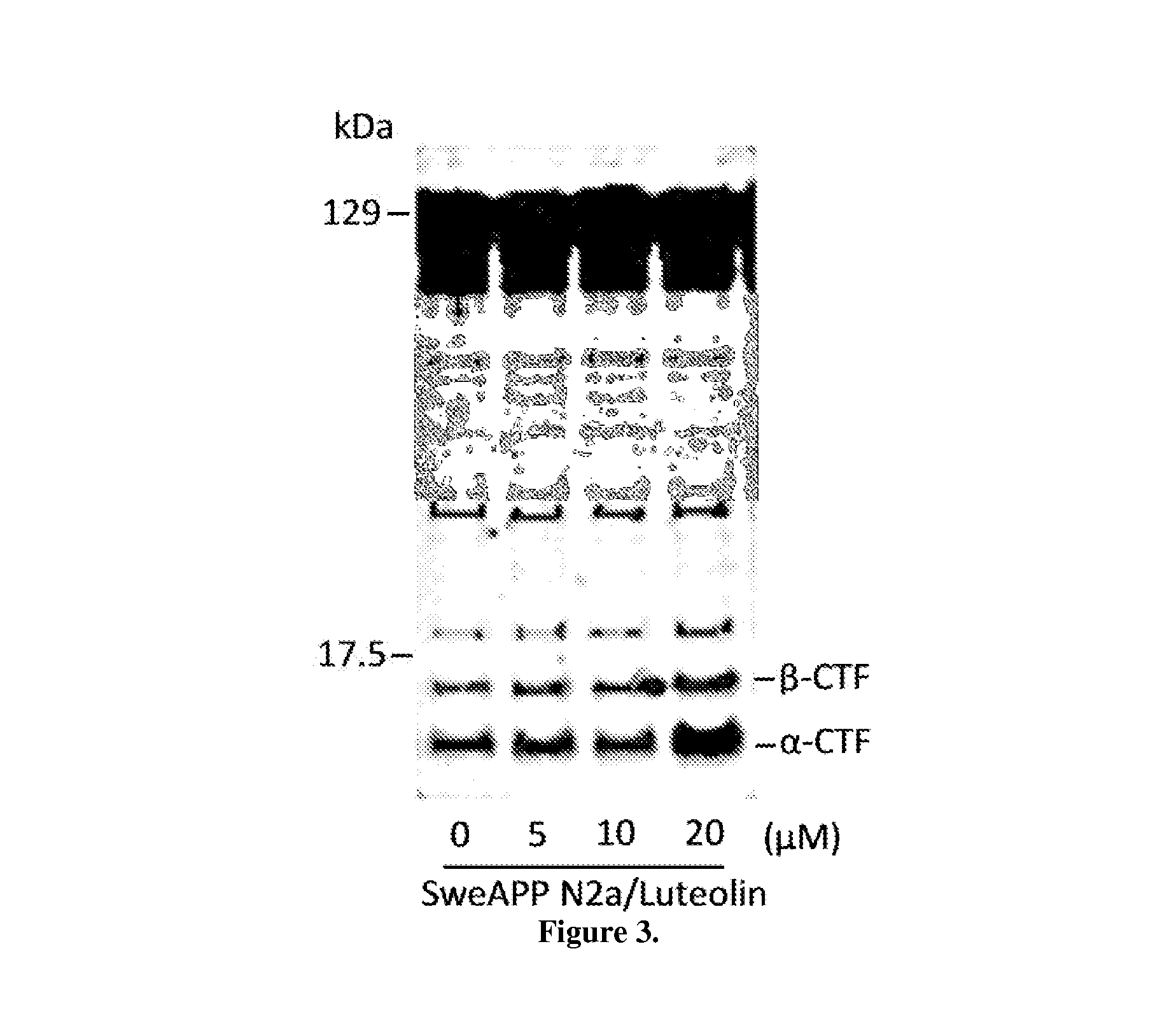Flavonoid treatment of glycogen synthase kinase-based disease
a glycogen synthase and flavonoid technology, applied in the field of enzyme inhibitors, can solve the problems of affecting the ps1 phosphorylation-dependent regulation of amyloidogenesis, reducing the production of a (toxic peptide), and losing gamma secretase activity, etc., and achieves the effect of effective and stabl
- Summary
- Abstract
- Description
- Claims
- Application Information
AI Technical Summary
Benefits of technology
Problems solved by technology
Method used
Image
Examples
example 1
GSK-3 Inhibition Alters PS1 Processing / Phosphorylation in SweAPP N2a Cells
[0080]Cultured cells or mouse brain were lysed in ice-cold lysis buffer described above, and an aliquot corresponding to 50 μg of total protein was electrophoretically separated using 12% Tris-HCl or 16.5% Tris-tricine gels. Electrophoresed proteins were then transferred to PVDF membranes, washed in dH2O, and blocked for 1 hr at ambient temperature in Tris-buffered saline (TBS; Bio-Rad) containing 5% (w / v) non-fat dry milk. After blocking, membranes were hybridized for 1 hr at ambient temperature with various primary antibodies. Membranes were then washed 3× for 5 min each in dH2O and incubated for 1 hr at ambient temperature with the appropriate HRP-conjugated secondary antibody (1:1,000). All antibodies were diluted in TBS containing 5% (w / v) of non-fat dry milk. Blots were developed using the luminol reagent (Pierce Biotechnology). Densitometric analysis was done as previously described using a FluorS Multi...
example 2
GSK-3α Regulates PS1-APP Association in SweAPP N2a Cells
[0084]Cell lysates of luteolin-treated SweAPP N2a cells were immunoprecipitated by PS1 antibody and probed for APP to clarify how phospho-PS1 CTF isoforms may regulate γ-secretase activity, seen in FIGS. 26(A) through 27(B). As illustrated in FIGS. 26(A) and (B), the APP-PS1 association is disrupted by luteolin, SB-415286 treatment, and GSK-3α siRNA. This treatment-mediated disruption has no correlation to full-length APP levels, as seen in FIGS. 27(A) and (B), indicating treatment has little effect on APP expression / trafficking. Thus, GSK-3α or, more specifically, downstream phosphorylation of the PS1 CTF plays an essential role in regulating the association of γ-secretase complex with its APP substrate.
example 3
Luteolin Treatment Inhibits GSK-3 Activation and Results in Reduction of Cerebral Aβ Levels in Tg2576 Mice
[0085]Eight month-old Tg2576 mice were treated with 20 mg / kg luteolin administered by daily intraperitoneal injection for 30 days to validate the above findings in vivo. Mice were anethetized with isofluorane and transcardinally perfused with ice-cold physiological saline containing heparin (10 U / mL). Brains were rapidly isolated and quartered using a mouse brain slicer. The first and second anterior quarters were homogenized for Western blot analysis, and the third and fourth posterior quarters were used for microtome or cryostat sectioning. Brains were then fixed in 4% paraformaldehyde in PBS at 4° C. overnight and routinely processed in paraffin in a core facility at the Department of Pathology (USF College of Medicine). Five coronal sections from each brain (5-μm thickness) were cut with a 150-μm interval. Sections were routinely deparaffinized and hydrated in a graded serie...
PUM
| Property | Measurement | Unit |
|---|---|---|
| Dimensionless property | aaaaa | aaaaa |
Abstract
Description
Claims
Application Information
 Login to View More
Login to View More - R&D
- Intellectual Property
- Life Sciences
- Materials
- Tech Scout
- Unparalleled Data Quality
- Higher Quality Content
- 60% Fewer Hallucinations
Browse by: Latest US Patents, China's latest patents, Technical Efficacy Thesaurus, Application Domain, Technology Topic, Popular Technical Reports.
© 2025 PatSnap. All rights reserved.Legal|Privacy policy|Modern Slavery Act Transparency Statement|Sitemap|About US| Contact US: help@patsnap.com



